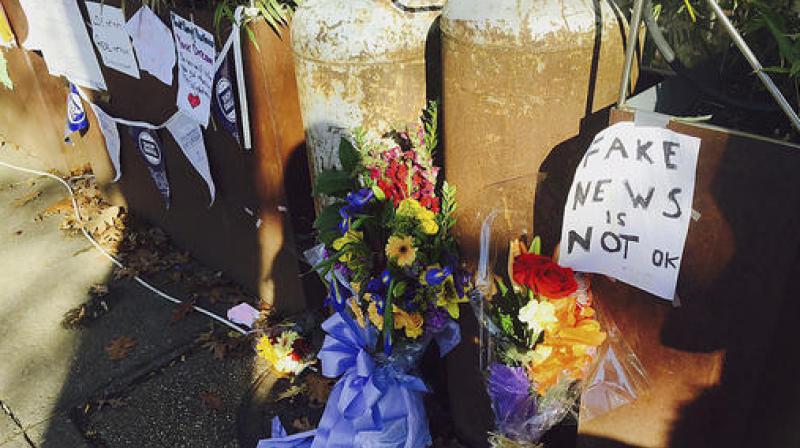Fake news, real effects

Karachi: Goebbels would have loved Facebook. The Nazi minister for propaganda would have immediately realised the potential of this medium to spread lies, and you can be sure he would be an avid WhatsApper too, That we now live in the era of fake news is undeniable. There’s nothing new about lies and misinformation. What’s different now is the speed at which such falsifications spread, and what’s frightening is the number of people who believe them. It wasn’t supposed to be this way; many believed that the information age would usher in a period of enlightenment in which we would be empowered to seek out and find truth. Instead, lies have gone global, circling the world several times through fibre optic lines before the truth has even put its pants on. Nowhere was the impact of this felt more greatly than in the US election. Yes, it is an industry: teenagers in Macedonia and Georgia are making thousands of dollars per month creating fake news and counting clicks and cash, and in a recent interview, Pal Horner, a famous manufacturer of fake news claimed to have made up to $10,000 a month during the US vote. Asked about the secret of his success, he replied: “There’s nothing you can’t write that people won’t believe.”
But fake news can have real consequences, as we saw in Washington D.C. a few weeks back when a man named Edgar Welch walked into a Pizza Parlour armed with an automatic rifle claiming he was there to free children he believed were being held captive and sexually abused in the restaurant. The basis for his beliefs was an outrageously false story dubbed “pizzagate”, which alleges that Hillary Clinton is part of an elite devil-worshipping cabal which sexually abuses and murders children, in the secret chambers of the said restaurant. He believed this because pizzagate was one of the most widely shared stories on Facebook, and was propagated by none other than the son of Trumps’ NSA pick, Gen. Flynn. Debunking such stories takes a lot more energy than spreading them does. You have to check sources, analyse any pics or videos that have been posted, while the person spreading it only has to click a button. When sharing is easier than fact-checking, the odds are stacked against truth.
After the tragic crash of PK661, an audio recording began circulating which purported to be of the last minutes of the ill-fated plane. It was heart-wrenching to listen to, was widely shared by laymen, politicians and journalists alike, and was a fake. Well not precisely a fake: the recording was from an Etihad Airways flight which encountered severe turbulence en route to Jakarta but which thankfully managed to reach its destination safely. Despite the fact that references to Jakarta can be heard in the audio, people continue to share it. Another spurious video made it from WhatsApp to the TV screen. In this video (allegedly shot from a mobile phone) a plane is shown flying normally and then suddenly taking a 90-degree dive towards the ground. This too was fake, and the effect of crashing was created by the video-maker simply turning the phone sideways. Detecting and debunking such stories is often a complex task, especially with fakers refining their techniques but there are tools and methods that can be found online. Ultimately though, the best defence is common sense, a healthy dose of scepticism, and the ability to recognise that while you may desperately want to believe something is true, that doesn’t necessarily make it so.
By arrangement with Dawn

